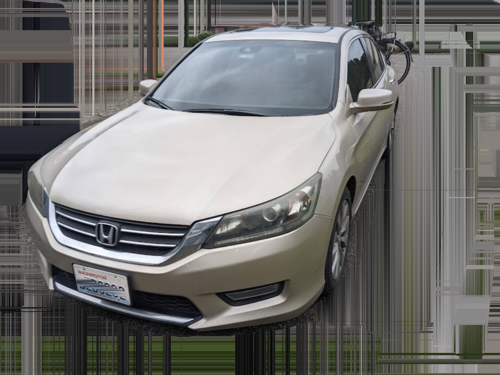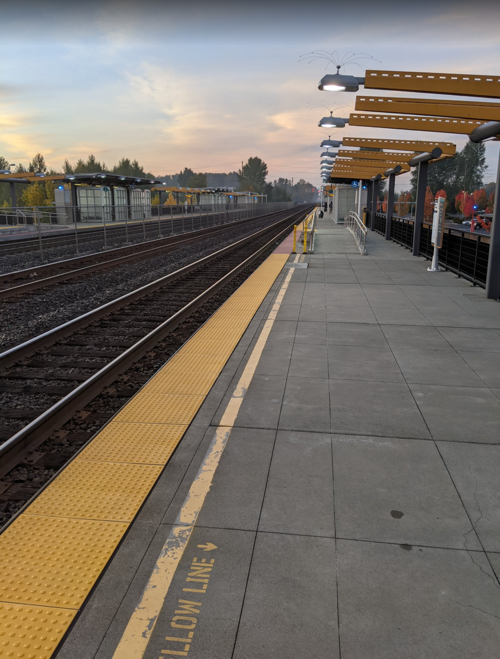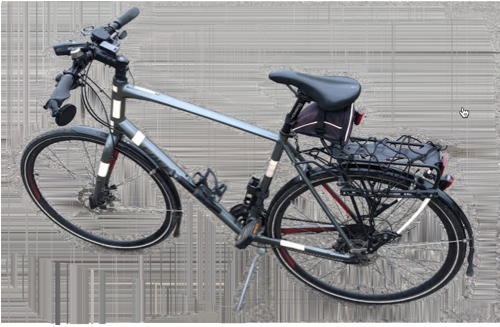My multimodal commuting strategies
- Spotlight filming of my commute
- Why adopt a multimodal route for commuting?
- Multimodal commuting strategies
Spotlight filming of my commute
Why am I posting about this now? A while ago I saw a request from a non-profit group in my area (Commute Seattle) looking for Seattle commuters that they could spotlight. Given that I’d written a few posts about my multimodal commuting strategies (e.g., Biking and public transportation in Renton and Seattle: Solving the first-mile and last-mile problems, or Urban sprawl and car dependence – some thoughts on solutions), I thought I’d be a good person to profile. Sure enough, they reached out to me, and this past week I had a film crew follow me during my commute to work.
Being filmed was a cool experience. I realized a few things about filming that I wasn’t entirely aware of. I thought the film crew would just sort of follow me, but instead I ended up doing the same tasks multiple times so they could capture different angles and perspectives. For example, I loaded my bike onto my car’s rack multiple times, pulled out of my driveway multiple times, carried my bike up the light rail stair’s multiple times, entered and exited the light rail car multiples times, rode along the same segment multiple times, and so on. They filmed from 9 am to 3:30 pm.
During some of the biking segments, one of the film crew actually got on a Segway going backwards while holding a camera suspended with a motion stabilizer. In another scene, they drove alongside my in a minivan with the door open while the camera person filmed me barrelling along a trail.
They will compress the 6.5 hours of filming into a 2-3 minute segment combined with 5 other people they spotlighted and release it during summer (at a time post-pandemic when many are returning to work).
They also did a short interview with me where they asked some questions about why I commuted the way I did, the multimodal strategies I’ve adopted, and so on. In preparation for this interview, I put together some notes and thoughts, which I want to share below.
May 15, 2022 update: My Commute Seattle spotlight video was released. Here it is:
Why adopt a multimodal route for commuting?
I commute from Renton (Southeast Seattle) to Fremont (a district in North Seattle). The distance is about 25 miles. The film crew was actually shocked that I commuted from this far out, but I argue that even if I lived in Seattle, going several miles across town would take me at least a half hour in traffic, if not more.
Also, the reality is that if you have a family and want to buy a house, you’ll probably be looking at suburban bedroom communities (like Renton). And with many companies embracing hybrid work schedules post-pandemic, commuting several times a week, even if farther out, isn’t a dealbreaker.
A consequence of living in the suburbs, though, is that you become more car-dependent. Suburbs aren’t designed with urban mobility in mind. Sure, there are some bus routes, but you really can’t get around in suburbs without a car like you could if you lived downtown in an urban center. With a car-dependent mentality, it’s easy to think that you need a car to go everywhere, even to get to work, but that’s not the best approach.
If you try driving into Seattle, you’ll find, as you get closer to the city, freeways become stop-and-go, the congestion multiplies, and many times you’re barely moving. Driving the last 5 miles to work can take 45 minutes or more. If there are accidents on the roads, you could be trapped there for two to three times as long. Cars don’t belong in dense urban areas.
My recommended commuting strategy is a multimodal one, where you combine a car with a train or light trail and then a bike. I like to break up the commute into a first-mile segment, public transportation segment, and a last-mile segment. In the following sections, I’ll share my strategies for each segment.
Multimodal commuting strategies
Adopting a multimodal commuting strategy (car + train + bike) gives you the most flexible mobility for urban travel. Breaking things down into a first-mile, transportation segment, and last-mile, the approach involves the following:
- First-mile: Drive your car to the transportation hub.
- Public transportation segment: Take the train or light rail into the city.
- Last-mile: Ride your bike to your final destination.
Sounds easy, right? It is, but there are also some considerations for each of these segments.
The first-mile (car segment)

Here are some tips for the car-driving segment:
-
Get a bike rack for your car. I have the Thule Helium Pro, which works well for me (though others have complained about it). You’ll probably have to get your car outfitted with a hitch to accommodate one of these hitch racks, but it works extremely well. You want to be able to easily load and unload your bike in less than a minute. I attach two ratchet straps latches and one sway bar ratchet strap. I also use a velcro strap to stabilize my front tire to the frame. Companies like Rack-n-Road (called an “outfitter”) can install a hitch and rack like this. Expect to pay about a thousand dollars for this, though ($500 for the hitch and installation, and another $500 for the rack). If that’s out of your budget, you can get a less expensive rack that involves webbing that hooks onto the side of your trunk. It’s not as elegant (straps sort of hang down everywhere), but it also gets the job done.
-
You need to be able to park your car at the train or light rail station. These lots fill up after about 9 am. Also, not all stations offer parking. You could park your car at a nearby park or side street and ride over to the station, if need be. However, you’ll need to think about potentially risky areas for leaving your car. Avoid leaving anything in the car that could potentially be perceived as a valuable item that a thief would want to steal. If you see broken glass in the parking lot, it’s often a sign of a break-in. If you’re really worried about theft, you could decrease your deductible (which is typically $500 and wouldn’t cover a broken window). I was surprised how little extra it cost to reduce my deductible to $0. Luckily, though, my car hasn’t been broken into yet.
-
Avoid any driving segments that involve the freeway. Freeways typically become stop-and-go experiences, but not non-freeway roads. Roads in suburban areas can become congested, for sure, but usually not to the same degree as a freeway, where you might come to a full stop and sit there, motionless for long periods, with stress rising.
Public transportation segment (train, light rail, or bus)

Here are some tips for the public transportation segment:
-
Don’t use two modes of public transportation. For example, don’t try to take one bus to connect to another, or use a bus to get to a train. It will take forever. Public transportation is often unreliable with timing, and you’ll spend time waiting for each connection point. For example, if your train ride is 20 minutes, you usually want to get there at least 5-10 minutes beforehand so you can park and make your way to the platform (which might involve ascending multiple sets of stairs). Because of all this extra connection time, I recommend using only one segment of public transportation.
-
Choose options that won’t get caught in traffic on the freeway (e.g., train or light rail). That’s why I dislike the bus — it’s at the whim of traffic congestion (even in the carpool lane), making it unreliable. Because buses follow the same roads as cars, it means the connection times will vary with traffic congestion. Taking the bus is an experience of waiting for it to arrive, wondering if it already arrived early and you missed it, or wondering if there’s some other issue causing the delay. It’s not the case with a train or light rail, which usually run like on time.
-
Consider the benefits of non-driving down time. You can recoup time on a train to make it useful. If you spend 30 min on a train but can read or write, it’s much more efficient than a 30-min car drive. Sometimes the time spent on a train is actually very productive. This is another reason to avoid the bus — the bus is bumpy and so hard to get more work done. I find that trains are great for writing. When I’m thinking about what to write, I can gaze out the window and gather my thoughts. I usually increase the font size on my computer so that I can see the screen more easily without straining. I find that larger font size reduces nausea from the vehicle’s motion.
-
Consider tradeoffs of speed versus flexibility. The train is fast and smooth, but there are usually fewer trains running and more limited stops. The Sounder train comes about every 20 minutes and stops running after 8:30 am (then picks up in late afternoon). In contrast, the light rail is a bit slower but runs every 8 minutes throughout the day. There are also more light rail stations (more stops means longer rides, though). Take the form of public transportation that makes the most sense for your commute.
The last-mile (bike segment)
Here are some tips for the biking segment:

-
Look for protected bike paths. Protected bike paths are usually two-way bike paths with some barrier between you and the car lanes, even if it’s just a little plastic pole. You can see different bike route options using your city’s bike map (for example, see the Seattle interactive bike map). Seattle’s interactive bike map distinguishes between neighborhood greenways, protected bike lanes, buffered bike lanes, painted bike lanes, climbing lanes, sharrows (shared lanes), paved regional trails, Stay Health Streets, and more. In short, it gives you much finer detail about the route that you won’t find on more general-purpose maps. I personally don’t feel safe riding for extended periods on shoulder-only routes. You can also use Google Street View to look at the route. You don’t want to get caught on a bad road with no shoulder and find yourself trapped in heavy traffic.
-
The bike segment shouldn’t be more than 10 miles each way. Anything beyond that and it’s not really sustainable unless part of your goal is cycling itself. If you’re going 15-20 miles on a bike, consider an ebike (but understand that ebikes are much heavier, so carrying one on and off a train might be cumbersome). Not only will a longer distance be physically exhausting, it will also take a long time. You don’t want to be commuting half your day. ebikes work well if you can find long stretches to travel, but if you’re going through the city (usually the last-mile segment), an ebike won’t be more efficient along a route that has many intersections and red lights.
-
It’s okay to take a longer route if you feel safer and it’s a more enjoyable ride. This is one consideration with my route — the Burke Gilman trail is much more enjoyable to ride along than protected paths along 2nd and 4th Avenue (which are stop-and-go all the way). The Avenues seem a little faster, but the ride isn’t as enjoyable.
-
Consider the exercise benefits of the commute. It’s not as if you’re entirely wasting time if you’re also getting exercise. If you stayed at home all day, you’d most likely need to spend some time at the gym (or similar) anyway.
- Riding a bike involves some more preparation and know-how. Have a plan for the following:
- How to ride in the rain
- How to shower at work
- How to carry all your stuff
- How to maintain and fix your bike (e.g, brakes, spokes, rims)
- How to lock your bike up
- How to recognize danger points in the route (intersections)
- How to pass pedestrians
- How to secure your bike on a train, light rail, or bus
- As you plan your route, do some experimenting. On a non-commute day (like a weekend), take some time to try out your route. Take some time to explore the area, figure out where to go, see if there are shortcuts not shown on the map, and so on. I do this a lot, and it’s actually fun to check out a route. You’d be surprised what you realize when you actually ride along it. Even looking at a route with Google Street View, you never quite know how it’ll be until you experience it first-hand.
About Tom Johnson

I'm an API technical writer based in the Seattle area. On this blog, I write about topics related to technical writing and communication — such as software documentation, API documentation, AI, information architecture, content strategy, writing processes, plain language, tech comm careers, and more. Check out my API documentation course if you're looking for more info about documenting APIs. Or see my posts on AI and AI course section for more on the latest in AI and tech comm.
If you're a technical writer and want to keep on top of the latest trends in the tech comm, be sure to subscribe to email updates below. You can also learn more about me or contact me. Finally, note that the opinions I express on my blog are my own points of view, not that of my employer.

